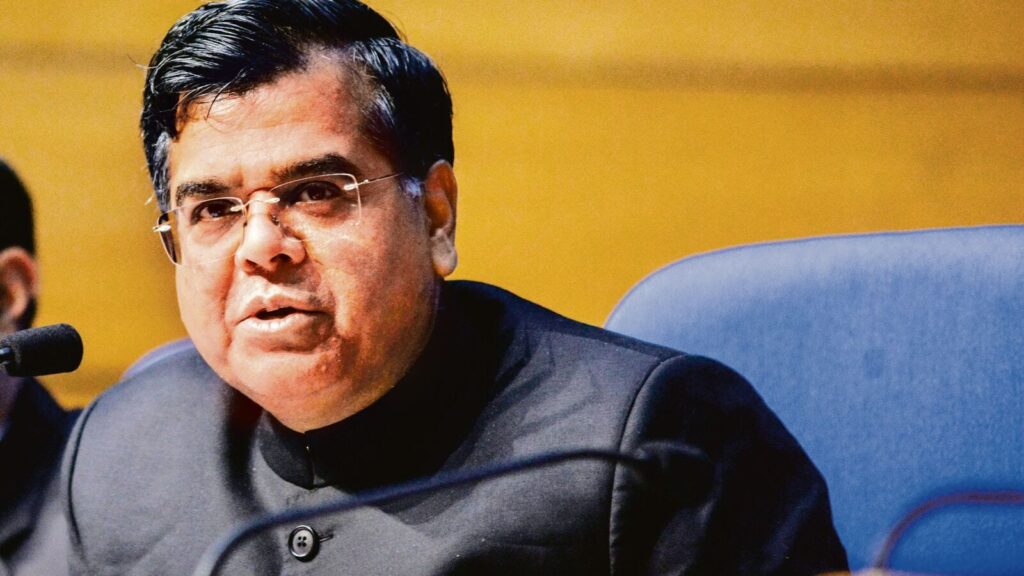New Delhi: The Centre will aim to keep its fiscal deficit for FY26 below 4.5% of the GDP, in line with its performance over the past two fiscals, where it bettered projections, finance secretary T.V. Somanathan said.
“The objective for the next year (FY26) remains to have the fiscal deficit below 4.5%,” Somanathan told Mint on Wednesday.
“From 2026-27 onwards, we will endeavour to keep the fiscal deficit each year in (such) a way that the Central government debt will be on a declining path as a percentage of GDP,” he added.
Reduced fiscal deficit
Under the slated glide path in the post-pandemic era, projected by finance minister Nirmala Sitharaman in 2021-22, the fiscal deficit is to be reduced to 4.5% by FY26.
The fiscal deficit during FY22 stood at 6.8%, according to the revised budget estimates.
While the fiscal deficit has fallen annually since FY22, the centre has bettered its fiscal deficit targets in the past two years, from 5.8% (revised estimates) to 5.6% in FY24 and from 5.1% to 4.9% in FY25.
To be sure, the original fiscal deficit target for 2020-21 was 3.5%. However, it shot up to 9.1% (revised estimates) due to the pandemic.
This was largely due to the low revenue flows during the lockdown and negative economic growth clubbed with high government spending to provide essential relief to vulnerable sections of society, as well as a stimulus package aimed at reviving demand.
Somanathan said the Centre is on track to reduce its debt-to-GDP ratio annually after bringing it down to 56% (in FY24). The debt to GDP ratio had shot up to over 61% in FY21, also due to pandemic-related spending to support the economy.
“The plan is to gradually reduce the debt-to-GDP ratio annually (from FY26),” he added.
The capital expenditure (capex) plan of the Central government, which remained unchanged from the interim budget, may increase in absolute terms in FY26, though remaining at 3.4% of the GDP, similar to the current level.
Broadly, the Capex will be maintained at the current level, at about 3.4% of GDP in the coming years, Somanathan said.
“It will not be below this. That is the intention,” he said.
“It could rise over 4% but it would depend on tax revenue, how the economy is performing. However, we are not committing to that at present.”
Meanwhile, states will have to carry out new reforms linked to land records in both rural and urban parts, which would include digitisation of such land records, easing of planning rules for industrial lands, improvement of urban land records, apart from utilising digital technology in agriculture to access a large chunk of the 50-year interest-free loans given by the centre for capital expenditure, Somanathan said.
In the 2024-25 annual budget, the Centre allocated ₹1.5 trillion towards the 50-year interest-free loans given to states (special assistance to states for capital expenditure), increasing it from ₹1.3 trillion allocated in the interim budget.
About ₹55,000 crore of the ₹1.5 trillion can be accessed by the state without any conditions, while for claiming the remaining amount states will be linked to reforms and other specific purposes like building/promoting iconic tourism sites, he added.
Current reforms that states must meet include reforms in the housing sector, incentives for scrapping old government vehicles and ambulances, reforms in urban planning and urban finance, increasing housing for police personnel, and setting up libraries with digital infrastructure at panchayat and ward levels for children and young adults.
Speaking of food inflation, Somanathan said while the Centre has already taken the required supply-side measures, it has allocated ₹10,000 crore to set up a price stabilization fund to keep food inflation under check.
Food prices have remained elevated for over a year—and have stayed above 8% since November—primarily due to last year’s uneven and below-normal monsoon rains.
Retail inflation based on the consumer price index (CPI) rose to 5.08% year-on-year in June, according to the latest statistics ministry data, after having dropped to a 12-month low of 4.75% in May.
The rise in June was due to higher food inflation, which accounts for nearly 40% of the consumer price basket.
The higher food inflation in June was because of the rise in prices of items such as cereals, vegetables, milk, and milk products.
“There’s one important measure which is funded in this budget, which is an expansion of the funding for the price stabilization fund which will enable price stabilization in pulses and oilseeds by buying up whenever prices are below the MSP (minimum support price) and thereby giving farmers assured prices so that the production rises,” he added.
Catch all the Budget News , Business News, Breaking News Events and Latest News Updates on Live Mint. Download The Mint News App to get Daily Market Updates.
MoreLess




